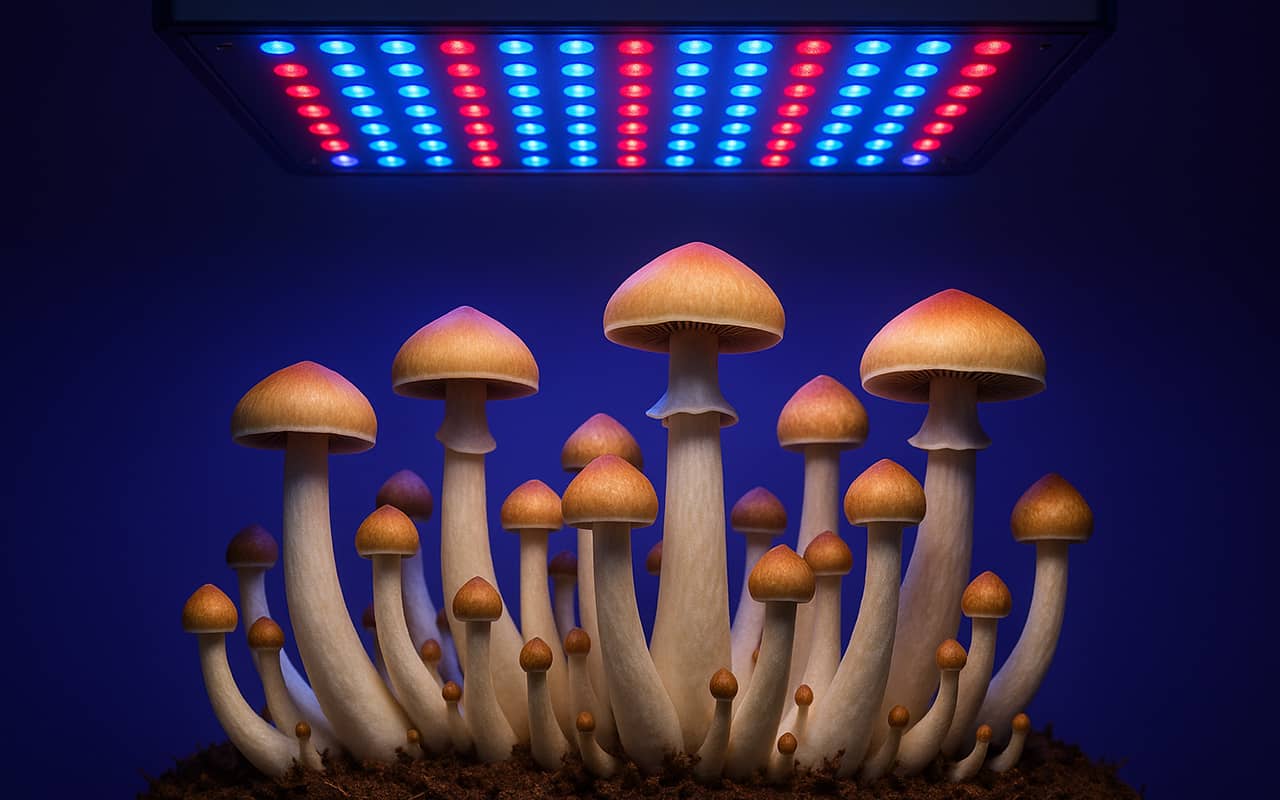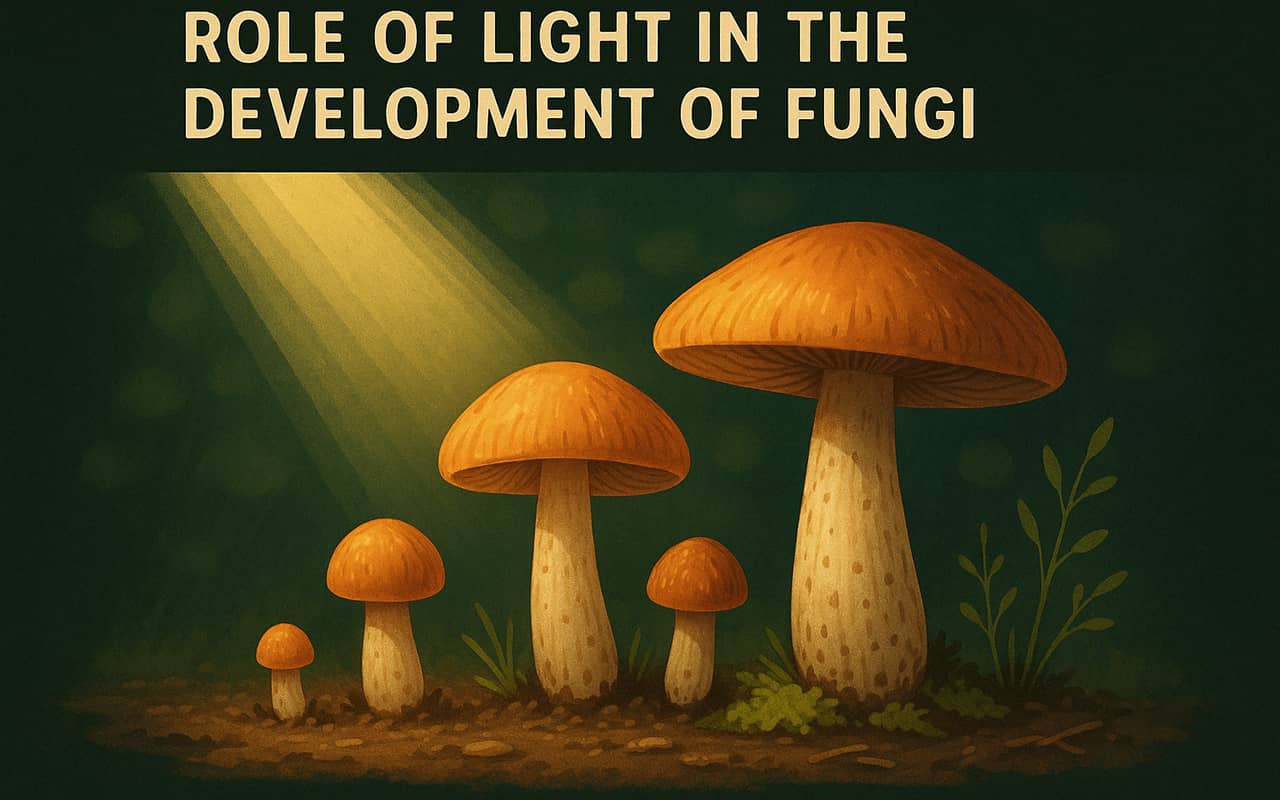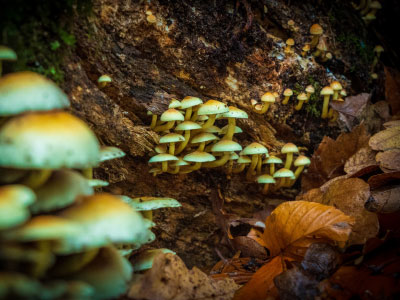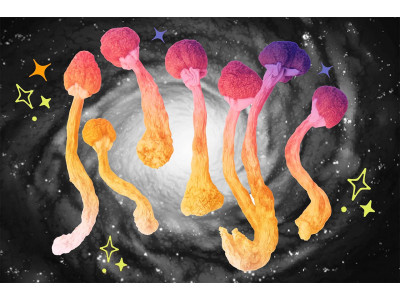You’ve probably already heard about therapies involving psilocybin mushrooms — from microdosing to clinical studies. In recent years, interest in them has grown significantly, along with the popularity of home cultivation. This is explained both by the desire to have access to one’s own raw material and by the growing attention to sustainable practices and the therapeutic properties of psilocybin.
Home mushroom cultivation brings not only harvests but also a unique experience: the moment when the first primordia (fruit body pins) appear impresses even experienced growers. However, success directly depends on how well you follow the key parameters: temperature, humidity, hygiene, ventilation, and of course, lighting.
Main Parameters for Home Mushroom Growing

To ensure proper development, mushrooms require the following conditions:
- Temperature: optimal for most psilocybin mushrooms is between +18 and +24 °C. Lower values slow down growth significantly, while higher ones can cause stress and deformities.
- Humidity: during colonization and primordia formation, high humidity (80–90%) is needed; during fruiting, it is reduced to 70–80%.
- Hygiene: cleanliness is key. Use alcohol to disinfect hands, tools, and surfaces to prevent contamination of the mycelium.
- Ventilation: mushrooms release CO₂ actively, so they require fresh air circulation, but without drafts.
The Role of Light in Mushroom Development

Mushrooms do not photosynthesize like plants, but light is still important — it acts as a signal to start fruiting. During substrate colonization, they are kept in darkness, and when it’s time to initiate primordia, fresh air and moderate lighting are introduced.
Excess light, especially direct sunlight or strong cannabis lamps, harms delicate fruit bodies. Mushrooms feel best under diffused or indirect light.
Lighting Types Depending on Growth Stage
- Incubation: no light is needed. Cultures are best kept in darkness so the mycelium evenly colonizes the substrate.
- Fruiting: to activate and stimulate growth, 12–16 hours of soft light per day is enough. LED or fluorescent lamps with a neutral spectrum (5000–7000 K) and brightness up to 2000 lumens are suitable. Avoid placing lamps too close or using excessive wattage.
Some growers experiment with shorter light cycles or even minimal lighting, achieving good results if other parameters are maintained perfectly.
Conclusion
Growing magic mushrooms at home is a fascinating but demanding process. The most important factors are temperature, humidity, and hygiene. As for light, only a little is needed: diffused, soft, without overheating or direct rays.
By following these simple rules, you can achieve a stable and high-quality harvest, as well as gain valuable experience observing the development of unique organisms that combine both scientific and therapeutic interest.
Warning! The contents of this article are intended solely for persons over 18 years of age and are provided for informational purposes only. We do not encourage cultivation or consumption. Psychedelics are prohibited by the legislation of Ukraine.




